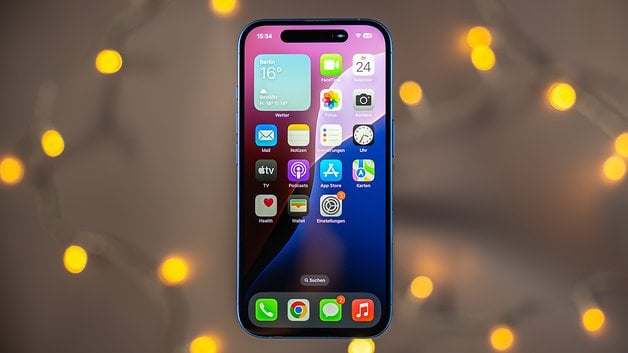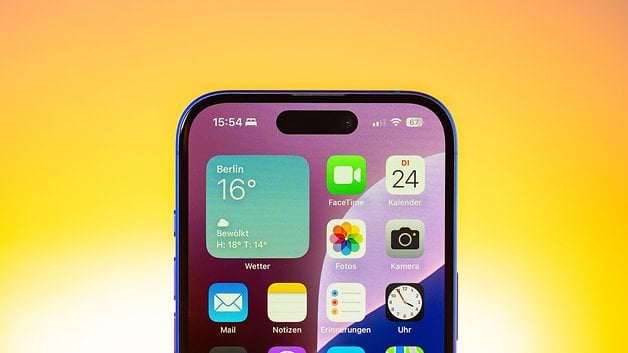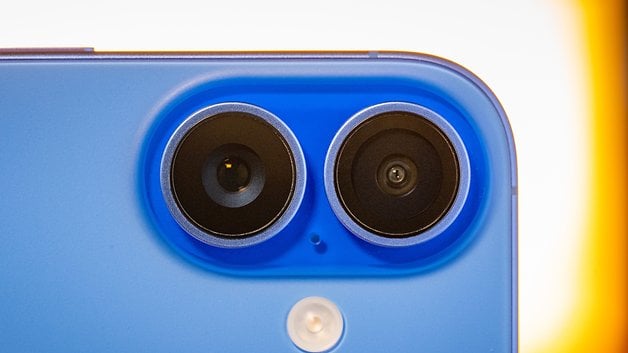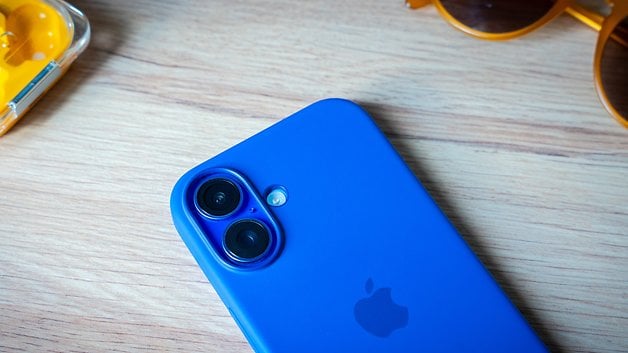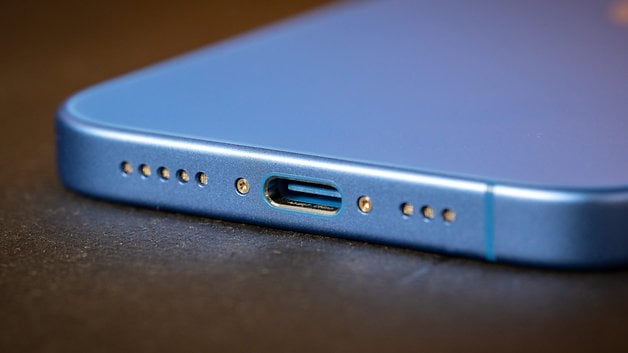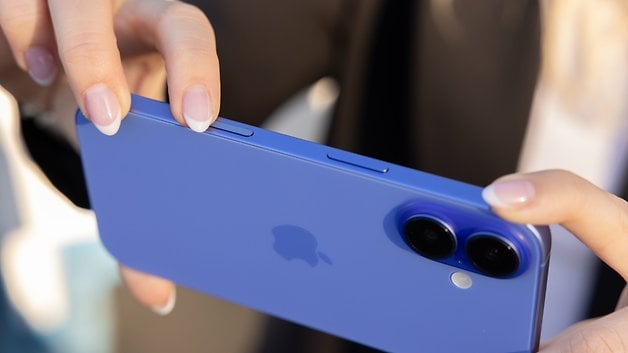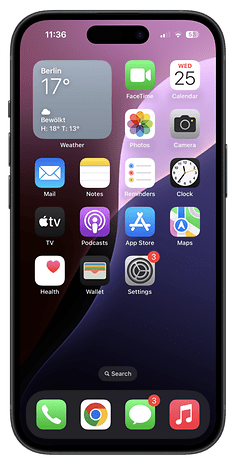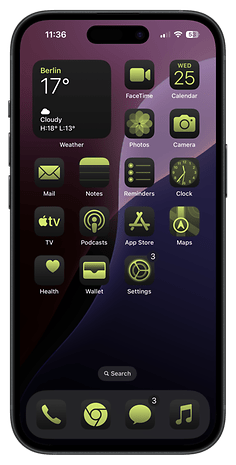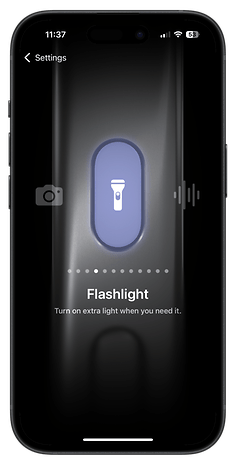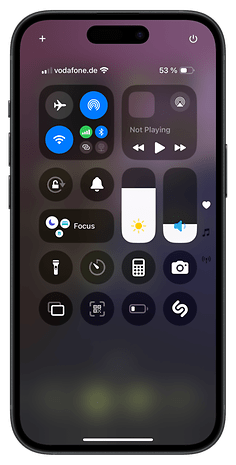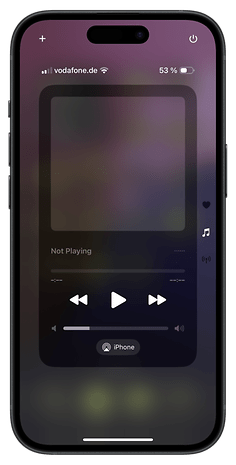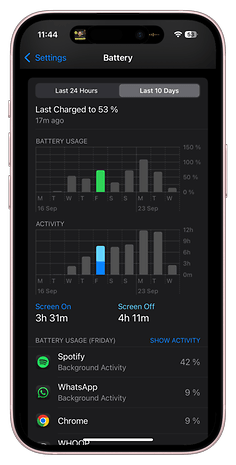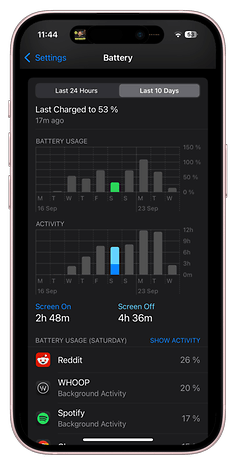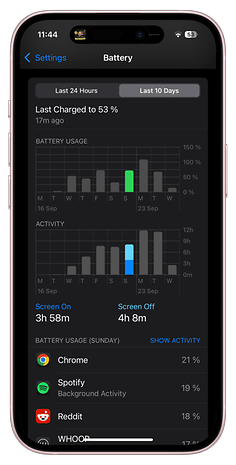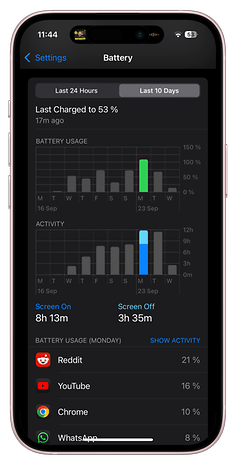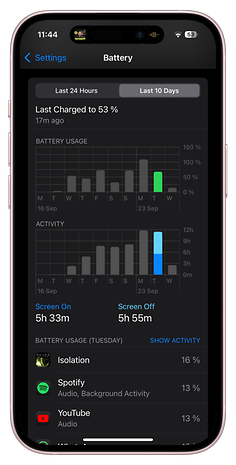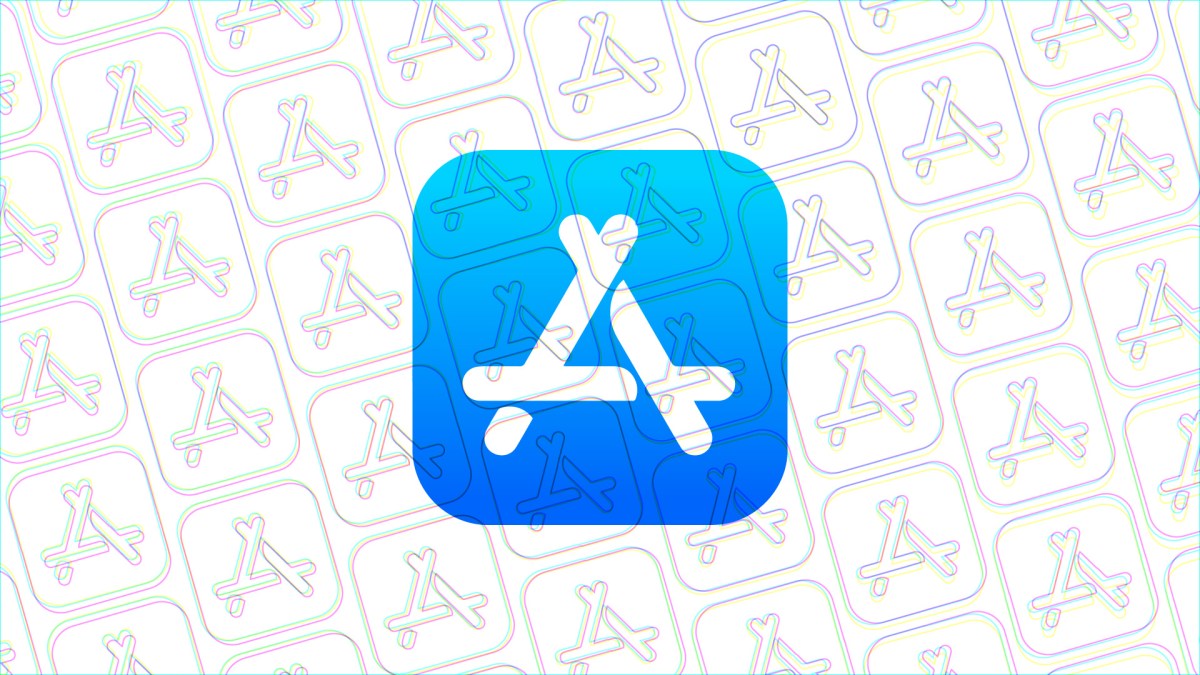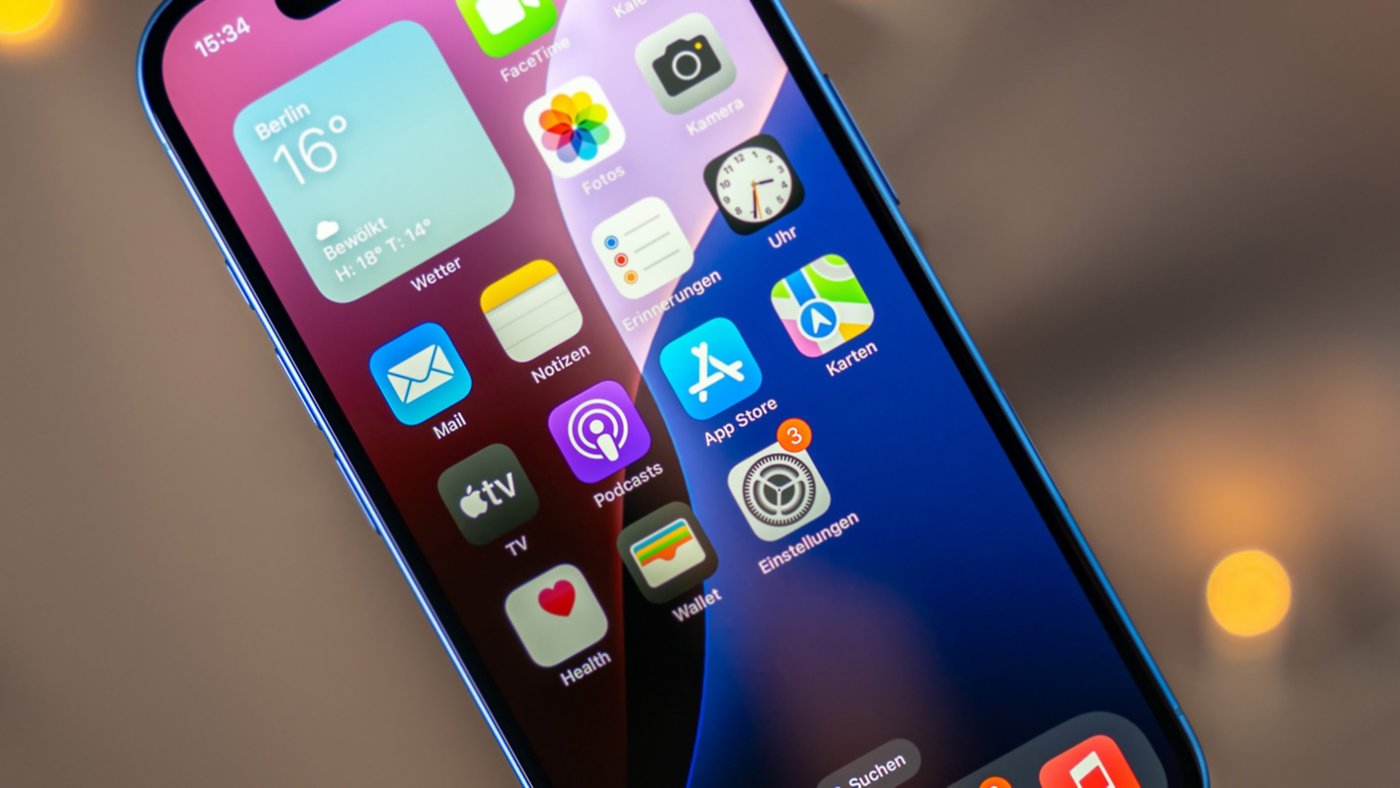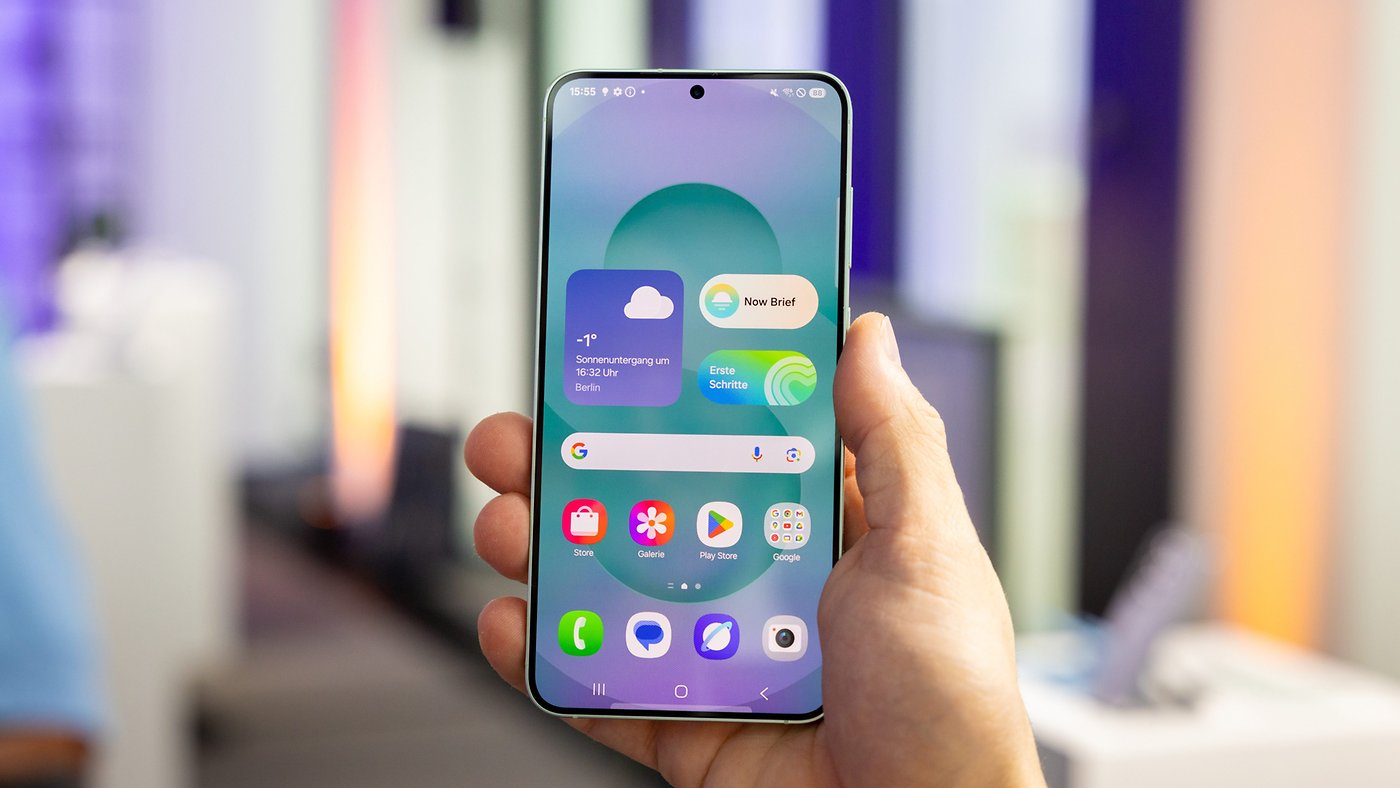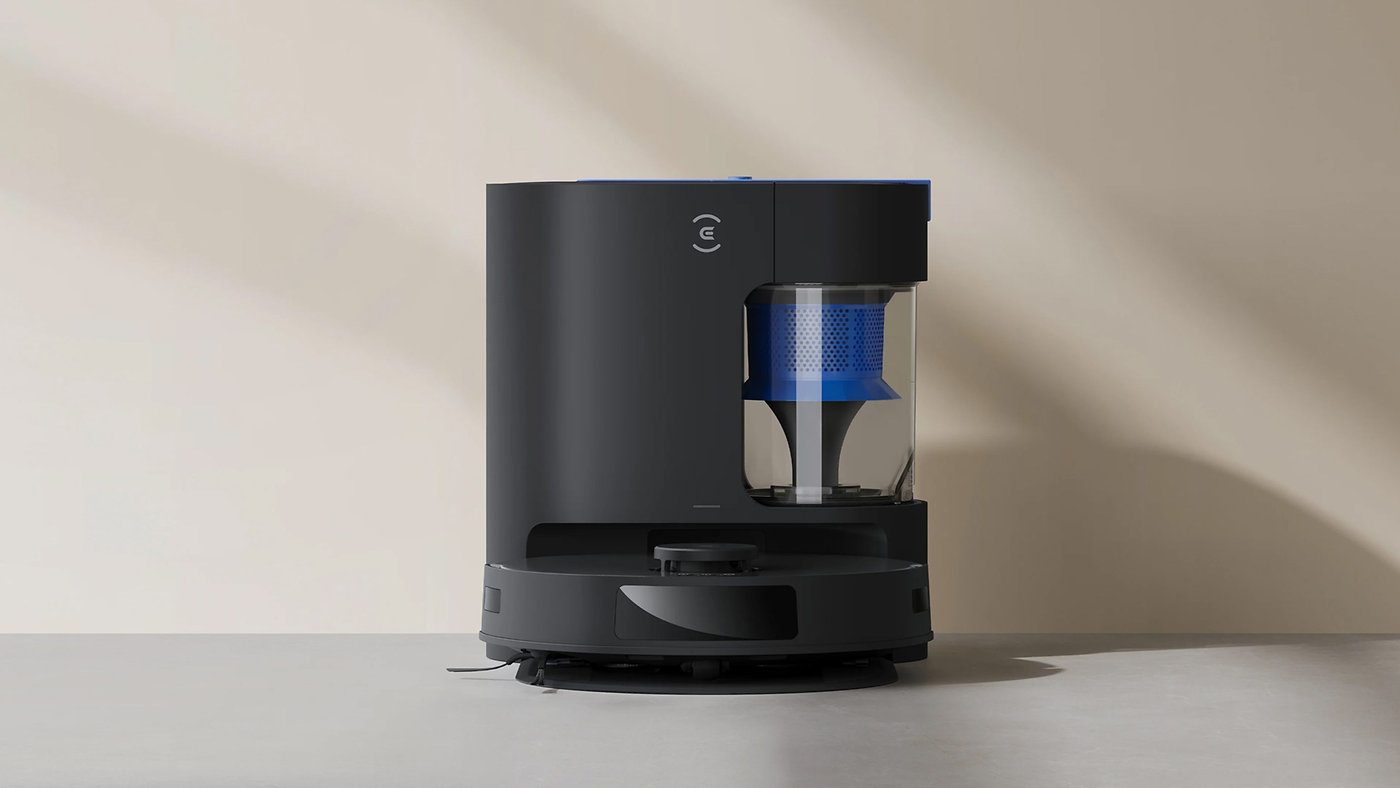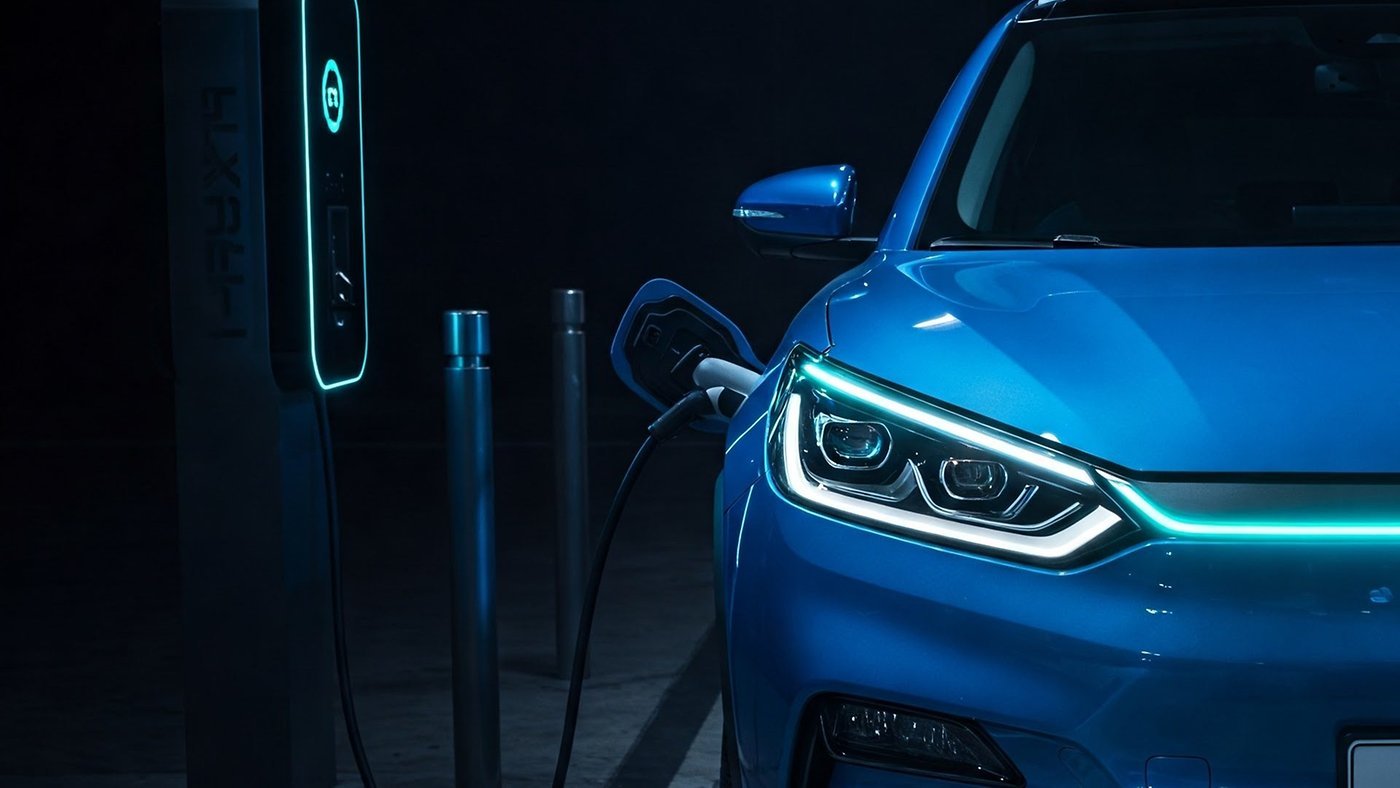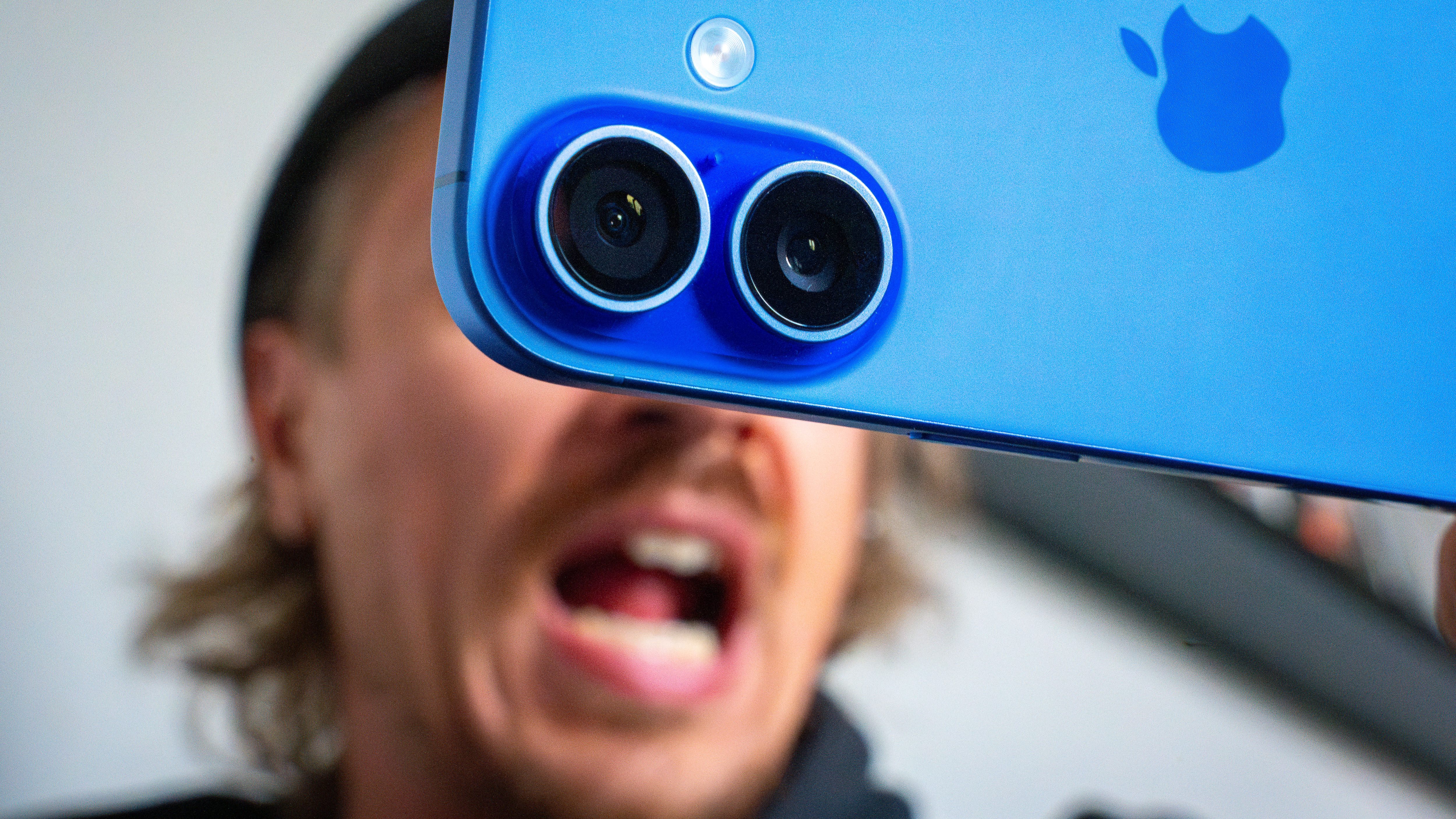
Apple introduced its new iPhone models with the accompanying motto, “It’s Glowtime”. The in-house AI integration of “Apple Intelligence” was supposed to make the iPhone glow, it’s just a shame that it’s not ready yet. Is it still worth upgrading to the iPhone 16? Let’s find out in this iPhone 16 review!
Good
- New shortcuts with the Action Button and Camera Control
- Major hardware upgrade thanks to A18 SoC and 8 GB RAM
- Image quality can be customized in many ways
- Outstanding battery life
Bad
- Lags behind the competition without AI integration
- Only 60 Hz refresh rate for the display
- Camera Control is only really practical in landscape mode
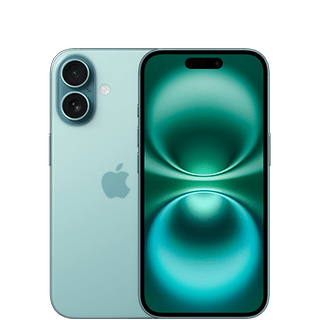
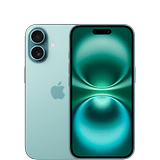
Apple iPhone 16: All deals
The iPhone 16 in a nutshell
A new way of operating, a significant change in the way you capture photos, and a decent hardware upgrade make the iPhone 16 a better deal than its predecessor. At the same time, the basic iPhone in 2024 looks more outdated than ever without a 120 Hz display and AI integration. Anyone expecting a completely new iPhone experience should therefore wait for the launch of Apple Intelligence if you live in a region that has not yet received it.
Design & display: New operating concept, old chassis
The iPhone 16 arrives in the same form factor as its predecessor. In other words, it has a 6.1-inch display with the “Dynamic Island” cutout and a 60 Hz refresh rate. While the Pro models have thinner bezels, the iPhone 16 only features a minimal reduction in brightness. In return, the basic model gets the Action Button and the new Camera Control. As is typical with Apple, the choice of materials and workmanship are first-class.
Pros:
- No need to be familiar with previous iPhones.
- Action Button is customizable.
- First-class workmanship as usual.
Cons:
- Tilts heavily when lying on its back without a case.
- Display is still stuck on a 60 Hz refresh rate.
It is rare for Apple to introduce several buttons on a new device. Anyone using an older basic model will therefore find the iPhone 16 unusual to use at first. The iconic mute button is now replaced by the customizable Action Button. After getting used to it, I found the Action Button to be practical, as I always mute my phone anyway and can therefore program the flashlight with it for instance. I also replaced the camera shortcut on the home screen. After all, I can access this via the new Camera Control (more about this later).
The form factor of the iPhone 16 is otherwise identical to the iPhone 15 and other predecessor models. This is due to the 6.12-inch display, which is embedded with even bezels in a 170 g lightweight chassis measuring 147.6 x 71.6 x 7.9 mm (H x W x D). The Dynamic Island constantly reminds you that you are using an iPhone.
Although you constantly smudge the front camera when using it, I found the tiny info display area to be really practical. Remaining time on the timer or the currently playing song on Spotify are displayed in a charming and discreet manner.
The display itself is very high quality, which is typical for Apple. The 460ppi pixel density means no pixels are visible, color fidelity is high and, thanks to OLED technology, the rather cool colors of the operating system are wonderfully saturated and the contrast is perfect.
While Apple was able to reduce the minimum brightness of the display to just 1 nit to save power, the maximum brightness of 2,000 and 60 Hz refresh rate have been retained. This looks outdated on the technical specifications in 2024, but is rarely noticeable in everyday use. Nevertheless, it is time for Apple to abandon this legacy.
Anyone using the iPhone 16 without a case will also have to get used to two changes. First, the iPhone 16 tilts a lot due to the altered arrangement of the rear camera. I also found the vertical position of the camera annoying, resulting in two contact points — the lower right corner of the case and the edge of the lower camera. If you accidentally place something on the iPhone or step on the handset in a worst-case scenario, only these two points will absorb the weight.
Second, Apple has made the glass back’s texture rougher. This makes it feel softer to the touch with an almost rubber-like quality that looks premium. Thanks to the aluminum frame, the glass at the back and Apple’s “latest generation Ceramic Shield” in front are high-quality materials. IP68 certification further underlines the good workmanship.
To lighten up this rather sober paragraph: Apple enters the approaching autumn season this September with new colors. Woohoo! My product photos depict the “Ultramarine” color, where in addition to the light blue which turns into a darker blue in the camera area, there’s a playful teal, pink, and binary color options (laaaame!) in white and black. Here’s a nice touch: Apple’s silicone covers are based on the visible camera island in terms of color choice — harmonious!
Software: More customizable than ever, but sans AI
The 16th iPhone generation will be delivered with iOS 18, Apple’s biggest innovation is the introduction of a number of AI functions. However, Apple fans all over the world still have to wait for these and are looking enviously at Google, Samsung, and the ilk. At least iOS can be visually customized much more to your own preference since the last update!
Pros:
- iOS look can be customized even more than ever.
- iPhone can now be controlled remotely on MacOS.
- Long update support.
Cons:
- Apple Intelligence is still missing.
With iOS 18, Apple’s newest operating system comes directly to the iPhone 16 right out of the box. However, AI integration via “Apple Intelligence”, which Apple used to promote the new iPhone at the keynote, is missing. I don’t know whether Apple AI is simply not ready yet or whether they want to create a bigger surprise effect. It is also currently unclear when “Apple Intelligence” will be released in Europe. On another note, whether there is an opt-out for “AI” also remains open. So much for #data protection and #sustainability … but who cares about the end of the world when there are new functions?
Let’s return to the topic: As you can read in our iOS 18 feature overview, there are many new features on your iPhone even without AI. In addition to a new Control Center with several pages, the look of icons can be changed system-wide for the first time. Even though I found the color scheme to be much uglier than Google’s Material You design, for instance, having more options is always a positive thing.
In general, iOS 18 is a very functional and intuitive operating system. Anyone familiar with previous versions will quickly be able to find their way around. Anyone who uses other Apple devices will enjoy the convenience of the interconnected ecosystem. In addition to AirDrop, Sidecar and other convenient functions, iPhones can now also be controlled remotely directly via MacOS.
Apple is also still supplying devices from 2018 with iOS 18. If we were to stick with a similar update policy, the iPhone 16 will still receive new operating system updates in 2030.
Performance & technology
Unlike last year, the iPhone 16 will be released with the latest iPhone SoC. Although the A18 Bionic is inferior to the Pro version from the Pro models in terms of performance, it is also supported by 8 GB of RAM. There is 128 GB of storage space as standard, which can be expanded to a maximum of 512 GB. With WiFi 7, Bluetooth 5.3, UWB, and satellite telephony, there is very little left to be desired.
Pros:
- Similar performance level as the Pro models.
- WiFi 7, ultra-wideband, and satellite telephony.
Cons:
- Storage upgrades are very expensive ($899 for 256 GB and $1,099 for 512 GB).
Surprise! Apple is moving its basic and Plus models closer to the Pro versions in the current iPhone generation. This is because the A18 SoC is the latest generation processor, which is manufactured using the 3 nm process. One differentiating factor between the base models and the Pro models is a weaker GPU. This means that the iPhone 16 is powered by 6 CPU cores, 5 GPU cores, and 16 NPU cores.
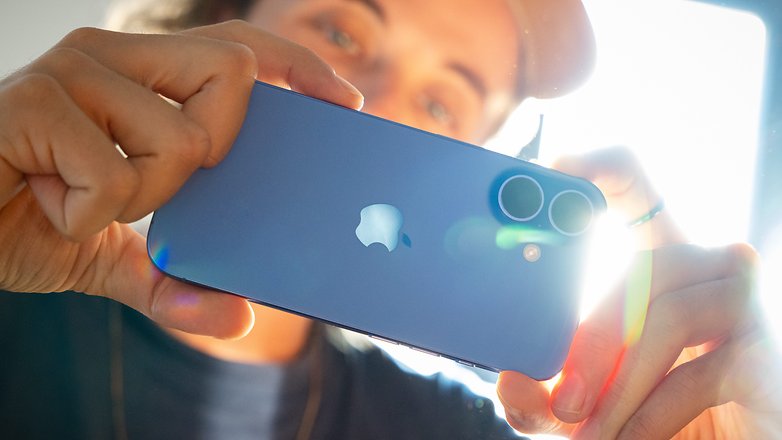
As with the Pro models, the SoC is mated to 8 GB of RAM. I guess Apple needs this technical base to make full use of Apple Intelligence. Here’s a reminder: In the previous generation, only the Pro models support the integration of Apple AI. In benchmark tests, we see the performance close to the Pro models.
| Apple iPhone 16 (A18 Bionic) |
Google Pixel 9 (Tensor 4) |
Apple iPhone 15 Pro(A16 Bionic) |
Apple iPhone 15 (A16 Bionic) |
Apple iPhone 15 Plus (A16 Bionic) |
iPhone 14 (A15 Bionic) |
iPhone 14 Pro Max (A16 Bionic) |
|
|---|---|---|---|---|---|---|---|
| AnTuTu | 1,701,457 | 826,999 | – | – | – | ||
| 3D Mark Wild Life Extreme | 3,911 | 2,588 | – | 3,036 | – | 2,431 | 3,362 |
| 3D Mark Wild Life Extreme Stress Test | Best loop: 3,643 Worst loop: 2,082 |
Best loop: 2,524 Worst loop: 1,358 |
Best loop: 3,553 Worst loop: 2,763 |
Best loop: 3,171 Worst loop: 2,378 |
Best loop: 3,253 Worst loop: 2,271 |
– | – |
| Geekbench | Single: 3,099 Multi: 7,638 |
Single: 1,666 Multi: 3,761 |
Single: 2,945 Multi: 7,171 |
Single: 2,651 Multi: 6,698 (v6) |
Single: 2,623 Multi: 6,605 (v6) |
Single: 1,699 Multi: 4,817 (v5) |
Single: 1,885 Multi: 5,406 (v5) |
In everyday use, such pedigree primarily ensures short loading times and smooth system performance. In this respect, the iPhone 16 is really only slowed down by the slow refresh rate display but the performance can only really be extended in mobile games. The game “Alien Isolation” showed just how far the graphics of mobile games have improved in recent years. I didn’t notice any stutters or frame rate drops while playing.
With WiFi 7 and Bluetooth 5.3 connectivity, Apple also offers the latest wireless standards. WiFi 7 in particular could be exciting for customers who want to use it with a Starlink or a fiber optic connection. Needless to say, all iPhones support 5G and Apple allows connections via satellite in emergency situations. Since this year’s performance is also excellent and future-proof, I’ll keep this segment short.
Camera
What’s going on at Apple? In addition to the colors of iOS, photographic styles can suddenly be adapted to your own preferences. Apple is thus (thankfully) moving away from the typical iPhone look that the cameras have been producing for years. We set aside the rather minor optimizations in the hardware and subjectively take better iPhone photos than ever before, which is even more fun!
Pros:
- Photos can be individualized.
- Camera Control brings important features to the fore.
- The new macro mode can be very practical sometimes.
Cons:
- New JPEG XL format remains reserved for Pro models …
- … just like RAW photography.
- Apple once again failed to solve the light flare problems in the dark.
A year ago, the iPhone 15 made the leap from 12 to 48 megapixels and was supposed to ensure better-looking photos via pixel binning. This year, Apple retained this strategy and introduced the glorification of digital zoom with the term “Fusion Camera”. Jokes aside, the main camera offers 2x digital zoom without any quality loss when shooting at a maximum of 24 megapixels. Hence, the dual camera can be marketed as a triple camera with three “native” focal lengths.

In reality, however, the iPhone 16 has almost the same camera modules as last year. Only the lens of the ultra wide-angle camera has been improved. With a f/2.2 aperture, it is slightly brighter and can now take “macro photos” thanks to its ultra-short focusing distance. This is activated automatically by default when you get close to the subject. As with the Pro models from last year, the image section shifts slightly.
The most important innovation this year apart from the ability to take spatial videos and photos for the Apple Vision Pro is the new Camera Control. Even if Apple doesn’t want to call it that, it’s an additional button with a capacitive surface located on the right edge of the chassis. You can use it to control a new quick menu in which the following settings are available:
- Exposure.
- Depth of field in portrait mode.
- Stepless zoom level from 0.5x to 2x.
- Cameras (0.5x, 1x and 2x).
- Photographic styles.
- Sound.
If you buy the new iPhone, I highly recommend that you activate the “Keep settings” option for exposure control followed by setting the “Tone” option to a value of around -0.5. This will limit Apple’s tendency to unnaturally brighten shadows in pictures. The iPhone 16 then takes wonderfully natural and sharp photos that you can adjust in surprisingly creative ways.
Two iPhone generations ago, Apple introduced “Photographic Styles”. These give you the option of taking iPhone photos with warmer or cooler colors, different saturation, and other preferences. This year, Apple is expanding the styles with a matrix for customization in the areas of “Tone”, “Color” and “Palette”. This allows you to give your photos your own look, which no longer necessarily has to look like an “iPhone”.
This year, I am a little disappointed by the gap between the basic and Pro models. This is not because the Pro models now both offer a 5x zoom or because they can record 4K videos at 120 fps. No, the Pro models can take photos in JPEG XL format. The format supports a 32-bit color space and, above all, is open source. I can well imagine that it will become more popular than the somewhat unwieldy HEIF format, which usually has to be converted to JPEG after the photo has been taken. As this is purely a software limitation, I think it’s unfair to reserve this innovation for the Pro models. *cough* just like RAW recordings *cough*
In conclusion, Apple’s iPhone camera is more flexible and fun than ever. I’ve read a lot of negative things about the Camera Control, even from ambitious photographers, but I found it practical for one reason: it gives me access to functions that were otherwise awkwardly hidden. Suddenly, my iPhone photos are much more suited to my taste because I can customize them better. I believe you’ll feel the same once you get used to the button.
Battery & charging
According to the Apple keynote, the iPhone 16 lasts two hours longer when it comes to video playback — 22 hours instead of 20 hours. Of course, nobody can do anything with this figure, so I was curious to see how the iPhone 16’s battery life would perform in reality. The answer? I’m thrilled and the iPhone charges faster too!
Pros:
- Very good battery life overall.
- Faster quick charging than its predecessor.
- Faster wireless charging via MagSafe and Qi2.
Cons:
- Charging performance flattens out sharply at 50 percent charge.
Short disclaimer: After two years, my iPhone 13 mini doesn’t even last a day. Hence, I’m used to charging several times a day, but I try to approach the iPhone 16’s battery life as objectively as possible …
… CrAp, THIS IS THE LONGEST LIFE EVER IN AN iPhOne!!! Jokes aside, Apple actually promised this marketing claim for the new Pro Max model. It would be a shame if it didn’t live up to the promise! In fact, the new iPhone battery with an increased capacity together with the more efficient chip offers excellent battery life. Unfortunately, iOS is incompatible with 3D Mark, so we can’t run any benchmarks.
However, my practical experience ranges from a festival weekend without power sockets with low usage to a day in bed with more than 8 hours of usage. You can see both statistics from the battery settings in my screenshots. I would always take the iPhone 16 with me for 2-3 days when traveling. I’m sure it will last if I limit my usage. And if there are power sockets nearby, there is actually reasonably useful quick charging.
Although Apple only offers chargers with 30 W, the iPhone 16 can handle 45 W charging power at peak. To protect the battery, Apple flattens out the charging power from the halfway point onwards. However, the first 50 percent of the iPhone battery is recharged very quickly:
| Apple iPhone 16 (n.a. | third-party charger 30 W) |
|
|---|---|
| Start | |
| 4:14 min | |
| 14:23 min | |
| 23:15 min | |
| 45:02 min | |
| 1h 35 min |
Of course, you can charge the iPhone 16 wirelessly again via MagSafe chargers and the Qi2 standard. Charging power should also increase to 30 W here. I’m still working on how short the charging times will be as a result. The new MagSafe charger is currently being used for our iPhone 16 Pro review.
Apple iPhone 16 technical specifications
| 2024 basic model | |
|---|---|
| Device | |
| Image |  |
| Display |
|
| SoC | |
| Capacity | |
| OS | |
| Camera |
|
| Selfie camera |
|
| Battery |
|
| Connectivity |
|
| IP certification | |
| Dimensions and weight |
|
| Offers* |
|
Conclusion
The release of the iPhone 16 is incredibly unusual for Apple. The manufacturer introduced two new buttons on the basic model: the Action Button and Camera Control, let its users change the look of iOS 18, and presented a range of functions during the keynote that will not be available at launch.
At the same time, they stuc to a display with an antiquated 60 Hz refresh rate, reintroduced the usual “there’s the latest SoC with less graphics performance” strategy, and once again, created an artificial gap with the Pro models without RAW recording and without JPEG XL support. Rarely has it been so confusing to use a new iPhone.
Once you get used to this confusion, the iPhone 16 is much more fun to use than older models. As a customer, I can customize my iPhone to my liking better than ever before with top-notch performance and fantastic battery life. At the same time, thanks to Camera Control, I am rediscovering iPhone camera functions that were otherwise too cumbersome to access.
In a world that is increasingly losing its individuality with AI-generated texts and images, Apple, of all companies, is making the iPhone more customizable than ever! The iPhone 16 underlines a trend that I have been seeing in smartphones for some time. While the hardware is hardly developing any further, software and AI features are becoming more important. Google has known this for some time with its feature drops. It’s positive to see that Apple is still just dynamic enough in 2024 to catch up … well, at least as soon as Apple Intelligence is ready.

